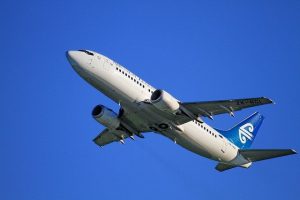 It’s no secret that most airplanes run on fuel. While advancements have been made in the field of alternative energy, the majority of private and commercial airplanes alike are powered by fuel. They burn fuel inside their engines’ combustion chambers to generate propulsion. Airplanes, however, don’t use the same fuel as cars, trucks and other automobiles. They require a specific type of fuel to maximize performance and efficiency.
It’s no secret that most airplanes run on fuel. While advancements have been made in the field of alternative energy, the majority of private and commercial airplanes alike are powered by fuel. They burn fuel inside their engines’ combustion chambers to generate propulsion. Airplanes, however, don’t use the same fuel as cars, trucks and other automobiles. They require a specific type of fuel to maximize performance and efficiency.
The Basics of Airplane Fuel
With the exception of piston-based airplanes, most airplanes use kerosene fuel. There are several different formulas available, the most common of which being Jet A-1. Also known as JP-1A, it’s used in most jet engine airplanes. Jet A-1 consists primarily of kerosene with a small concentration of additives. These additives serve as preservatives that protect jet engines from damage.
The Benefits of Kerosene Fuel
Airplanes use kerosene fuel for several reasons. First, kerosene is considered less volatile than traditional gasoline. It has a flashpoint of approximately 100 degrees Fahrenheit, meaning kerosene won’t ignite until it’s exposed to temperatures in excess of 100 degrees Fahrenheit. At the same time, kerosene has a lower freezing point than gasoline. Kerosene won’t freeze until its temperature drops to minus 22 degrees Fahrenheit.
A low freezing point is important because of the high altitudes at which airplanes fly. Most commercial airplanes have a cruising altitude of about 33,000 to 42,000 feet above sea level. At this altitude, the air becomes significantly colder than that of the air near the ground. Thanks to the low freezing point of kerosene, it can withstand these harsh and cold environmental conditions without freezing.
Kerosene lasts longer than gasoline. As previously mentioned, it’s less volatile than gasoline. Volatility reflects the shelflife of a fuel. Since gasoline is volatile, it degrades relatively quickly. Kerosene is not volatile, so it lasts longer without degrading.
Another reason airplanes use kerosene is to save money. Kerosene is cheaper to produce than gasoline. With a lower cost of production, kerosene usually costs less than gasoline as well. And considering that commercial jets can hold thousands of gallons of fuel, this makes kerosene an attractive choice among commercial airlines.
In Conclusion
Most airplanes don’t run on gasoline. They run on kerosene-based fuel. Kerosene fuel, including Jet A-1, has a higher flashpoint and a lower freezing point than gasoline. It’s also cheaper and less volatile than gasoline. For these reasons, most airplanes with the exception of piston-based airplanes run on kerosene fuel.



